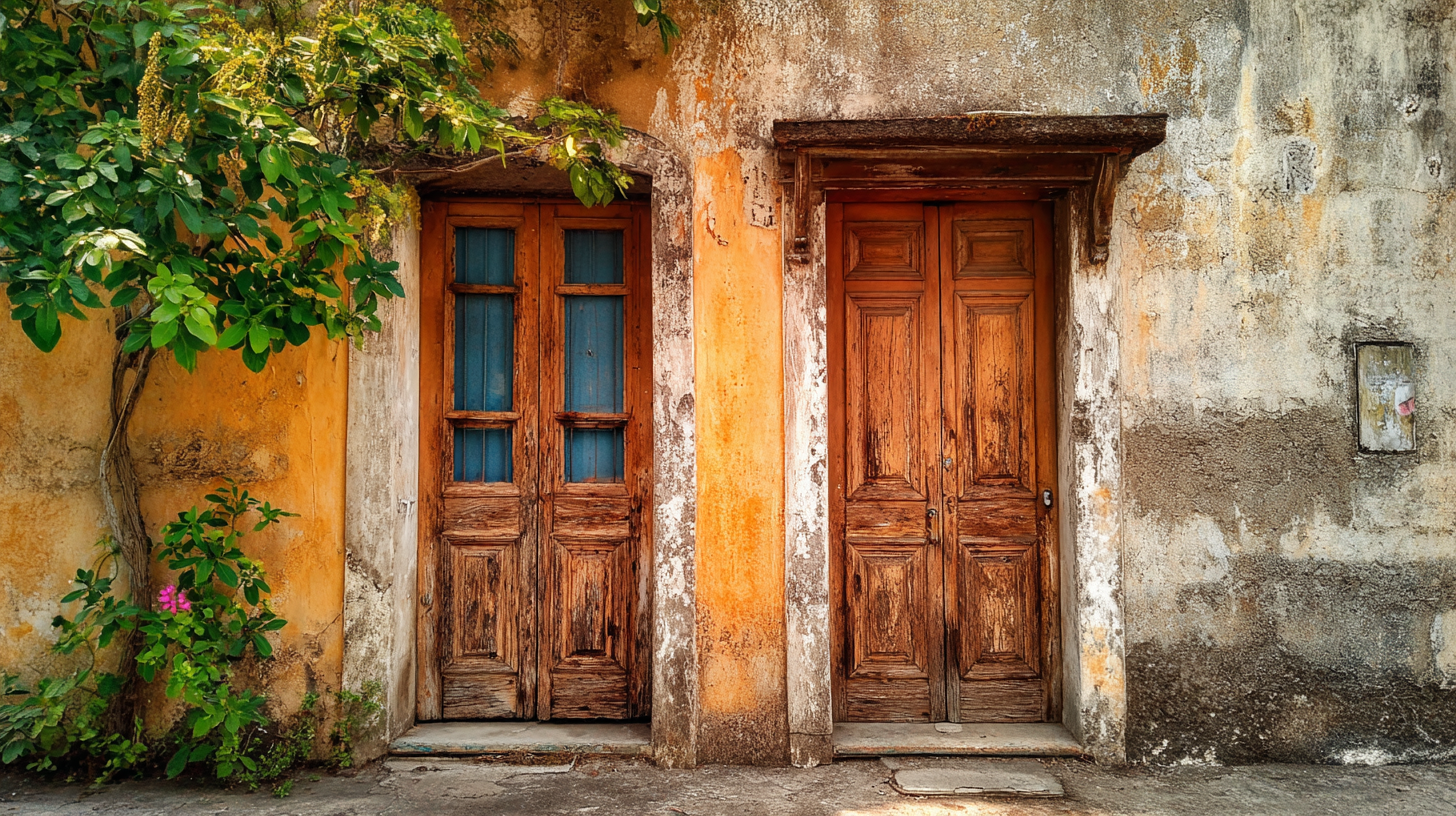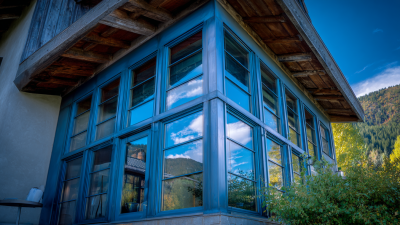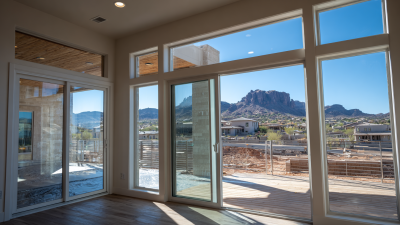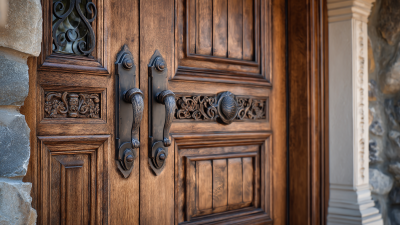Understanding Energy Efficiency in Doors and Windows for Sustainable Living
In today’s pursuit of sustainable living, understanding energy efficiency in doors and windows is paramount. These essential elements of a building not only influence its aesthetic appeal but also play a crucial role in determining overall energy consumption. By improving the thermal performance of doors and windows, homeowners can significantly reduce heating and cooling costs while minimizing their carbon footprint. This article explores various strategies and practical tips for selecting, installing, and maintaining energy-efficient doors and windows. From understanding different materials and technologies to optimizing the design for better insulation, we aim to empower readers with knowledge that promotes environmentally friendly choices. Join us as we delve into the intricacies of energy efficiency in doors and windows and discover how thoughtful investments can lead to a more sustainable lifestyle.

Exploring the Benefits of Energy-Efficient Doors and Windows
Energy-efficient doors and windows have become essential components in the pursuit of sustainable living. According to the U.S. Department of Energy, about 30% of a home's heating energy is lost through inefficient windows and doors. By upgrading to energy-efficient models, homeowners can significantly reduce their energy consumption, lowering utility bills and minimizing their environmental impact. For instance, double-glazed windows can provide up to 50% more insulation compared to single-glazed options, making a substantial difference in maintaining indoor temperatures.

In addition to cost savings, energy-efficient doors and windows enhance home comfort and indoor air quality. The American Society of Heating, Refrigerating and Air-Conditioning Engineers (ASHRAE) notes that improved insulation can lead to fewer drafts and a more consistent indoor climate. Furthermore, advanced technologies, such as low-emissivity (Low-E) coatings, can block harmful UV rays while still allowing natural light to enter, protecting furnishings and reducing the need for artificial lighting. These benefits not only promote a healthier living environment but also contribute to long-term sustainability by decreasing reliance on fossil fuels for heating and cooling.
Key Features to Look for in Energy-Efficient Window and Door Products
When considering energy-efficient windows and doors, a few key features can make a significant difference in enhancing your home's sustainability. One of the most critical aspects is the insulation quality. Look for products that offer double or triple glazing, as these can substantially reduce heat transfer. Low-emissivity (Low-E) coatings are also beneficial; they minimize the amount of heat that escapes during colder months while reflecting sunlight during warmer months.
Another essential feature is the frame material. Vinyl, fiberglass, and wood-composite frames tend to provide better insulation compared to traditional aluminum. Ensure that the doors and windows you choose have a high R-value, which indicates their effectiveness in resisting heat flow. Additionally, pay attention to the air leakage rating; products with a lower rating will prevent drafts and improve overall energy efficiency.
Tip: When replacing windows and doors, consider their Energy Star certification. This mark ensures that they meet strict energy efficiency guidelines set by the U.S. Environmental Protection Agency.
Tip: Always check for proper installation as well; even the most efficient window or door can underperform if not installed correctly. Professional installation can make a significant difference in energy savings.
Top 5 Energy-Saving Technologies for Modern Doors and Windows
Modern doors and windows play a crucial role in enhancing the energy efficiency of our homes. With the growing emphasis on sustainable living, utilizing advanced energy-saving technologies has become essential. Among the top five solutions, double or triple glazing is a standout choice. These multi-layered glass options provide excellent insulation, minimizing heat transfer and reducing reliance on heating and cooling systems. This technology not only increases comfort but also leads to significant energy savings over time.
Another noteworthy innovation is the use of low-emissivity (Low-E) coatings on window glass. This technology reflects infrared light, keeping heat inside during winter while blocking excessive heat during summer. Additionally, energy-efficient frames for doors and windows, made from materials such as fiberglass or sustainably sourced wood, contribute to lowering thermal bridges and enhancing overall efficiency. Lastly, insulating window films can further improve performance by adding an extra layer of thermal protection. By integrating these technologies into home designs, homeowners can significantly reduce their carbon footprint and promote a sustainable lifestyle.
Practical Tips for Maximizing Energy Efficiency in Your Home’s Entrances
Maximizing energy efficiency in your home's entrances, particularly through doors and windows, is essential for sustainable living. One of the simplest ways to enhance energy efficiency is to install weather stripping around doors and windows. This helps to seal gaps that allow drafts to enter the home, leading to unnecessary heating or cooling losses. Regularly inspecting and replacing worn-out weather stripping can dramatically improve your home’s insulation.
Additionally, consider upgrading to energy-efficient windows and doors. Look for products with high Energy Star ratings, which indicate superior thermal performance. Double or triple-pane windows can significantly reduce heat transfer, keeping your home warmer in winter and cooler in summer. Don't forget about the importance of proper installation; even the best products won't perform effectively if not fitted correctly. Finally, utilizing window treatments such as shades or films can further enhance insulation while adding aesthetic value to your living spaces. By following these practical tips, you can create a more energy-efficient home that contributes to sustainable living.
DIY Upgrades to Improve Door and Window Energy Performance
Improving the energy efficiency of doors and windows is a critical step towards sustainable living. Many homeowners overlook simple DIY upgrades that can significantly enhance energy performance. From weather stripping to window films, these projects can be both cost-effective and straightforward.

One effective tip is to apply weather stripping around doors and window frames to eliminate drafts. This can be easily achieved with adhesive foam strips, which not only reduce energy loss but also enhance indoor comfort. Another upgrade is the installation of thermal curtains; these can help keep heat in during winter and block out heat during summer, creating a more stable indoor climate without relying heavily on heating or cooling systems.
Additionally, consider applying window films to increase insulation. These films can be installed easily and help reduce heat transfer, leading to lower energy bills. When choosing materials, look for options that emphasize sustainability and longevity, maximizing the impact of your DIY energy performance upgrades.
Related Posts
-

The Ultimate Guide to Choosing Quality Windows for Energy Efficiency and Style
-

Unlocking the Power of Windows for Home: A Comprehensive Guide to Optimize Your Everyday Experience
-

Why Choosing the Right Home Doors Can Transform Your Living Space
-

The Impact of Quality Windows on Energy Savings and Home Comfort in Modern Construction
-

Unlocking the Value of Quality Doors in Modern Home Design
-

The Ultimate Guide to Choosing the Best Glass Windows for Your Home
- © Copyright
- Andy's Glass & Window Company
- All Rights Reserved
- Blog